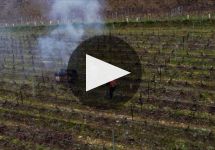Bouchard Pere & Fils Beaune Clos de la Mousse Premier Cru Monopole 2021
-
Wine
Spectator -
James
Suckling
Last call - only 3 left!



Product Details
Your Rating
Somm Note
Winemaker Notes
Pair this wine alongside white meat dishes or grilled poultry.
Professional Ratings
-
Wine Spectator
Sweet, ripe cherry and wild strawberry fruit mingles with Asian spices and a kiss of new oak in this open-knit, alluring red. Silky and firm enough to age a few decades, this leaves a complex spice- and mineral-tinged aftertaste. Best from 2026 through 2042.
-
James Suckling
An elegant Beaune 1er Cru with stacks of red fruit aromas including a touch of watermelon. The lively acidity interlocks neatly with the well-crafted fine tannins on the medium-bodied palate. Long harmonious finish. Sustainable.
Other Vintages
2022-
Wine
Spectator -
Robert
Parker - Vinous
-
Wine
Spectator -
Robert
Parker -
James
Suckling -
Jasper
Morris
-
James
Suckling -
Jasper
Morris -
Wine
Spectator -
Wilfred
Wong -
Robert
Parker
-
James
Suckling -
Wine
Spectator -
Robert
Parker -
Wilfred
Wong
- Decanter
-
James
Suckling -
Wine
Spectator -
Wine
Enthusiast -
Wilfred
Wong -
Wine &
Spirits
-
James
Suckling -
Wine
Spectator
-
Wine
Spectator -
Wine
Enthusiast -
Wine &
Spirits -
Wilfred
Wong
-
Wine &
Spirits -
Wine
Spectator -
Robert
Parker
-
Wine
Spectator -
Robert
Parker
-
Wine
Enthusiast





Established in 1731, Bouchard Père & Fils is one of the oldest and most diverse Estate in Burgundy with approximately 130 ha (320 acres) of vineyards, the majority of which are Premiers and Grands Crus. Highly sought after, their wines benefit from optimal ageing conditions in the underground cellars of the Château de Beaune, the former 15th century royal fortress that the Domaine has occupied since 1820. Bouchard Père & Fils doesn't make wines; they bring them into existence. Cultivation and vinification, on a plot-by-plot basis, are a form of craftmanship that they pride themselves on which has led to the utmost respect for their terroirs. Bouchard Père & Fils obtained the highest level of sustainable agricultural certification (HVE3) in 2015, being the first in the Côte d'Or to do so.

Thin-skinned, finicky and temperamental, Pinot Noir is also one of the most rewarding grapes to grow and remains a labor of love for some of the greatest vignerons in Burgundy. Fairly adaptable but highly reflective of the environment in which it is grown, Pinot Noir prefers a cool climate and requires low yields to achieve high quality. Outside of France, outstanding examples come from in Oregon, California and throughout specific locations in wine-producing world. Somm Secret—André Tchelistcheff, California’s most influential post-Prohibition winemaker decidedly stayed away from the grape, claiming “God made Cabernet. The Devil made Pinot Noir.”

While the city represents the epicenter of wine production in Burgundy, the term, “Beaune” also refers to the specific sub-appellation of the greater Côte de Beaune, whose vineyards climb up the pastoral slopes that border the city to its west. Originally founded as a Roman camp by Julius Caesar, the city of Beaune eventually became the seat of the dukes of Burgundy until the 13th century. Today it is home to top négociants such as Louis Jadot, Joseph Drouhin, Louis Latour, and Bouchard Père et Fils.
The appellation, dominated by Pinot Noir plantings, represents a lovely and charming place to begin to understand red Burgundy. Its sandy soils create light and supple, floral driven Pinot Noir. These wines are designed to be enjoyed within five to 10 years. The vineyards of Beaune span a broad swath of Premier Crus from Savigny-lès-Beaune to its border with Pommard.
Chardonnay acreage here has been increasing here in the more recent years.
